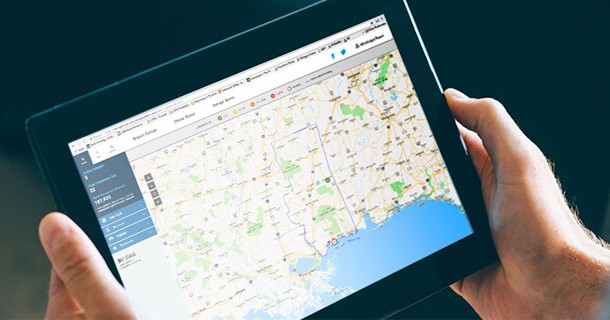Stay Safe During A Storm
Tips to help you be prepared before, during and after a storm
Before
- Charge your cell phone — and anything else that needs to be charged.
- Build an emergency kit, including enough food and water to last for at least 72 hours. Include any medications that might be needed.
- Plan now for how you and other family members will contact each other if a storm hits.
- Stock food, water and medication for family pets.
- Include a battery-operated radio, batteries and flashlights in your emergency kit.
- Turn your air conditioning down to cool your house. If you keep the doors and windows closed after the storm, you can keep your house relatively cool for about 48 hours after the storm.
- Fill bathtubs and sinks with water for washing and flushing toilets.
- Leave a porch light switched on so that utility crews will be able to determine immediately the success of specific repairs.
- Secure your home and bring outdoor objects indoors.
During
- If severe weather is in your area:
- Listen to the TV or radio for information.
- Avoid using the phone, except for serious emergencies.
- If you are unable to evacuate during a storm:
- Stay indoors and away from windows and glass doors.
- Take refuge in a small interior room, closet or hallway on the lowest level.
- Don’t be fooled if there is a lull. It could be the eye of the storm and winds could pick up again.
After
- If your power is off, turn off large appliances and air conditioners and wait 10 to 15 minutes after power has been restored before turning them back on.
- Keep freezer doors closed and sealed. Well-filled freezers keep most foods frozen two to three days if the door is kept closed.
- Continue listening to local news for the latest updates.
- Stay alert for extended rainfall and subsequent flooding even after the hurricane or tropical storm has ended.
- If evacuated, return home only when officials have said it is safe.
- Drive only if necessary. Avoid downed lines, flooded roads and washed out bridges.
- Keep away from loose or dangling power lines. Any power line could be 'hot', or energized. You can’t tell by just looking. Report them immediately to Mississippi Power at 800.532.1502.
- Don’t attempt to repair the electrical system or pull tree limbs off lines. Let our trained work crews perform this potentially dangerous work.
Prepare For A Hurricane
The better prepared you are, the better you can deal with a storm and maintain comfort after it passes. To prepare for an approaching hurricane and help you and your family cope in the following days, complete a Family Hurricane Plan.
Family Hurricane Plan
In the plan, you should decide:
- When the family should evacuate. Regardless of your decision, obey all evacuation orders from local officials.
- Where you'll go. Map alternate routes in case a mass evacuation clogs your main evacuation route.
- What you'll do with family pets.
- Where you'll store boats or recreational vehicles.
- Which relatives you'll notify and when.
- What you'll do to protect important family papers and keepsakes.
- Where family members will gather after the hurricane passes if they're not able to be together before it hits.
- You'll also want to locate all emergency shelters. This will be vital if you decide to leave at the last minute.
- Determine which pre-storm duty each family member will handle. For example, will Dad put plywood on the windows while Mom takes the dog to the kennel for boarding?
- If you are a single parent who might need help getting ready as a storm approaches, it would be a good idea to coordinate your plan with a family member or neighbor.
- If you have elderly family members or friends who live alone, keep them in mind when you're getting your Family Hurricane Plan ready.
Work with your family on the plan
Make sure everyone understands your Family Hurricane Plan once it's complete. Then, set aside a weekend in May each year for family hurricane planning and preparation. Use the weekend to review the family's plan and gather storm supplies. Your supplies should be enough to get each family member through about three days without electricity or running water.
To help you get started, here's a list of what you should include:
- Canned goods and non-perishable foods that don't require cooking, such as
- Canned meats and fishes
- Canned soups and puddings
- Canned fruits and vegetables
- Canned fruit juices
- Dried fruit
- Peanut butter and jelly
- Bottled water
- Baby formula and food
- Coffee and tea (instant)
- Canned meats and fishes
- Prescription medicine — two-week supply
- Manual can opener
- Disposable plates, cups and utensils
- Water purification tablets — halazone
- Infant care items — disposable diapers, wipes
- First aid supplies
- Flashlights or lanterns and extra batteries
- Ice chest
- Masking or duct tape
- Battery-operated radio
- Non-electric clock
- Canned heat — sterno
- Portable outdoor camping stove or grill with fuel supply
- Fire extinguisher (ABC type)
- Plastic sheeting for drop cloth
- Chlorinated bleach
Prepare For A Tornado
The first step to surviving a tornado is to listen for tornado watches and warnings. A tornado watch means that conditions are favorable for a tornado to form. A tornado warning means there is immediate danger of a tornado.
Local radio and television stations serve a great purpose in notifying us of severe weather, but are not always available or turned on. Outdoor warning sirens are also good warning devices.
But the best way to hear tornado warnings in your home is a NOAA weather radio, which picks up around-the-clock broadcasts from the National Weather Service and sounds a loud alarm in the event a warning is issued.
Choose a safe place. Practice being prepared.
Pick out a safe place in your home and make sure all family members, especially children, know to go there in the event of a tornado warning. Conduct periodic tornado drills, so everyone remembers what to do when a tornado is approaching. Stress the importance of staying calm.
If you live in a home.
The safest place in your home in the event of a tornado is on the lowest level, preferably the basement, if you have one. Choose a small room away from windows, such as a closet, hallway or bathroom. Stay near the center of the house to put as many walls as possible between you and a tornado. Close any doors in the room. If your safest room is the first-floor bathroom, grab a mattress or some cushions, get in the tub and put the mattress or cushions over your head for protection.
If you live in a mobile home.
Pick a nearby shelter to go to in the event of a severe weather threat. Should a tornado warning sound, get out immediately and head for safety in a nearby shelter or the basement of a nearby building. If there is no time to get to a shelter, lie flat in a ditch, culvert or other low-lying area and cover your head with your arms and hands. Do not try to flee a tornado in a vehicle.
Know what to do if you are caught outdoors
If you're caught outdoors, hurry to the basement of a nearby sturdy structure or building. Or lie flat in a ditch, culvert or other low-lying area and cover you head with your arms and hands. Do not remain in a vehicle during a tornado. Immediately get out and lie flat in the lowest nearby area, protecting your head with your arms and hands.
Prepare For A Flood
Did you know that flash flooding is the number one weather-related killer in the United States? Most flash flooding is caused by slow-moving thunderstorms, thunderstorms moving repeatedly over the same areas or heavy rains from hurricanes and tropical storms. In fact, flash flooding can occur within only a few minutes or hours of excessive rainfalls and can happen almost anywhere or anytime.
Be alert
- Know your area's flood risk. During rains that have lasted for several hours or even several days, be attentive to the chance of flooding.
- Listen to local radio or television stations for possible flooding information, as well as NOAA weather radio for watch and warning bulletins.
Flood and flash flood survival tips
- Observe these safety rules. They could save your life.
- Watch for rising water levels.
- Know where high ground is and move there quickly if you see or hear rapidly rising water.
- Do not attempt to cross through flowing water that may be more than knee deep.
- Do not try to drive through flooded areas — most flood-related deaths occur in automobiles.
- If your vehicle stalls, abandon it and seek higher ground immediately.
- Be especially cautious at night, the time of day most difficult to recognize the dangers.
- A flood/flash flood watch means it is possible that rains will cause flash flooding in the specified area. Be alert and prepared for a flood emergency.
- A flood/flash flood warning means flash flooding is occurring or is imminent in the specified area. Move to safe ground immediately.
The better prepared you are, the better you can deal with flooding and maintain comfort afterwards.
Prepare For A Winter Storm
Freezing temperatures and even ice storms — prolonged periods of freezing rain — do happen in the South. Here are some tips from the American Red Cross to help make sure you and your family stay safe during a winter storm:
- Wear layers of lightweight clothing to stay warm. Gloves and a hat will help prevent losing body heat.
- Seek medical attention immediately if you have symptoms of hypothermia, including confusion, dizziness, exhaustion and severe shivering.
- Never use a stove or oven to heat your home.
- If you are using a space heater, place it on a level, hard surface and keep anything flammable at least three feet away — things such as paper, clothing, bedding, curtains or rugs.
- Turn off space heaters and make sure fireplace embers are out before leaving the room or going to bed.
- If you are using a fireplace, use a glass or metal fire screen large enough to catch sparks and rolling logs.
- Don’t forget your pets — bring them indoors. If they can’t come inside, make sure they have enough shelter to keep them warm and that they can get to unfrozen water.
- Avoid frozen pipes – run water, even at a trickle, to help prevent them from freezing.
- Open the kitchen and bathroom cabinet doors to allow warmer air to circulate around the plumbing.
- Be sure to move any harmful cleaners and household chemicals out of the reach of children.
- Keep the garage doors closed if there are water lines in the garage.
- Use generators correctly — never operate a generator inside the home, including in the basement or garage.
- Don’t hook a generator up to the home’s wiring. The safest thing to do is to connect the equipment you want to power directly to the outlets on the generator.
Find more winter weather preparation tips at the American Red Cross website.
Prepare For A Thunderstorm
Approximately 100,000 thunderstorms occur each year in the United States, with only 10 percent being classified as severe. However, all thunderstorms are dangerous. They produce lightning, heavy rain that can lead to flash flooding, strong winds, hail and tornadoes. Thunderstorms most often occur in the spring and summer months and during the afternoon and evening hours, but can occur year-round and at all hours.
Be prepared
- Watch for signs of approaching storms.
- Check the weather forecast before heading outdoors for extended periods of time.
- Postpone outdoor activities if thunderstorms are imminent. Avoid being caught in a dangerous situation.
- If a storm is approaching, tune in to a NOAA weather radio, which picks up around-the-clock broadcasts from the National Weather Service.
Know what to do
- Find safe shelter immediately inside a sturdy building, away from windows, doors and electrical appliances.
- Avoid contact with conductors of electricity such as appliances, metal objects and water.
- Get out of boats and away from water. Find a low spot away from trees, fences and poles that is not subject to flooding.
- If you are in the woods, take shelter under the shorter trees. Squat low to the ground on the balls of your feet with your hands on your knees and your head between them. Make yourself the smallest target possible and minimize your contact with the ground.
- Do not take a shower or bath.
- Turn off air conditioners — power surges can overload the air conditioning equipment.
- Telephone lines and metal pipes can conduct electricity. Avoid using the telephone or any electrical appliances; unplug all those unnecessary.
Stay informed
- Severe thunderstorm watches tell you when and where severe thunderstorms are more likely to occur.
- Severe thunderstorm warnings are issued when severe weather has been reported by spotters or indicated by radar.
- Be aware of tornado and flash flood watches/warnings that can often be issued during severe thunderstorms.
Lightning Precautions
One lightning strike can carry enough electricity to power 10 million homes for one month. If you're caught outside when there is lightning, keep in mind the following tips to help protect yourself:
- Stay away from all conductors of electricity — chain link fences, playground equipment and all water, including lakes, rivers, ponds and pools.
- Seek shelter. The safest place is a sturdy building, away from windows, doors and electrical appliances.
- If you can't find shelter, try a cave or depression in the ground or a low area in dense woods.
- Remember that lightning seeks the quickest path to the ground.
- Don't be the tallest object around, and don't stand near or under the tallest object, such as a tree.
- Lightning may travel from the tallest object, such as a tree, to any nearby object that is a better conductor of electricity.
- Humans are good conductors because our bodies are 70 percent water.
- If you're caught on open ground, make yourself as small a target as possible. Drop to your knees and crouch low to the ground. Don't lie flat on your back or stomach.
- If you feel hair stand on end, lightning may be about to strike you. You may be able to prevent this from happening by immediately dropping to your knees and crouching low.




